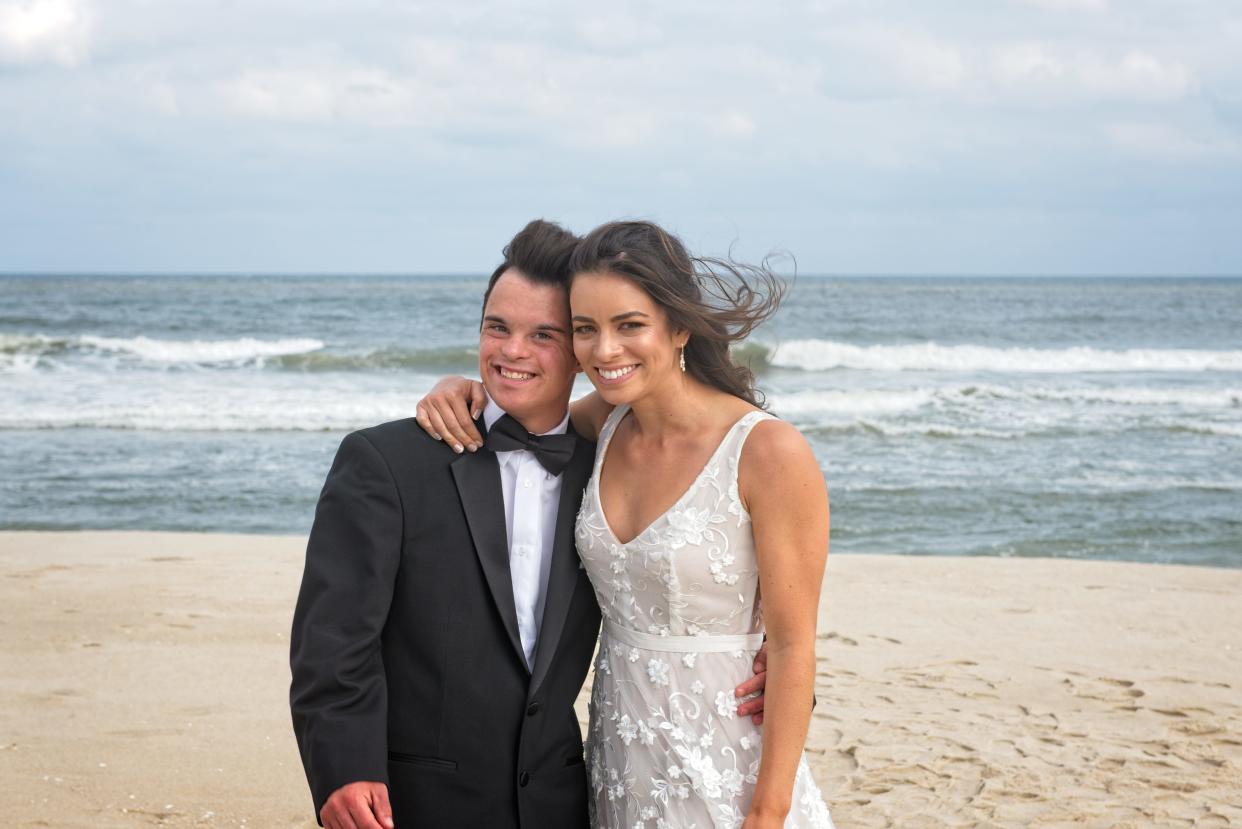Pediatrics in Brevard: Brother with Down syndrome inspires older sister to become doctor

Editor's Note: October is Down Syndrome Awareness Month. I am writing this article explaining my experience loving and caring for someone with Down syndrome. As a pediatrician, I will describe my personal and medical experience with Trisomy 21, aka Down syndrome.
When I was 6, my brother Joey was born one month early, weighing 7 pounds. Although he had a third chromosome 21, (Trisomy 21), he looked like me with long dark hair and brown eyes.
My three siblings and I enjoyed holding and playing with him. Although my parents explained he would be a “slow learner,” we didn’t consider him any different.
Previous Pediatrics in Brevard columns:
Dual-income families: Children with two working parents often have positive outcomes
I see...: Having children's eyes checked yearly is important for overall health
Lather up: It's important to properly apply sunscreen to kids during summer
Down Syndrome explained
Medically, infants with Down syndrome have unique concerns.
Some have difficulty coordinating nursing due to large tongues and low muscle tone. Joe had no difficulty.
He had the common prolonged jaundice.
All newborns receive hearing tests. Down syndrome babies have an increased incidence of hearing problems; Joe tested fine.
Fifty percent of Down syndrome babies have heart defects so they require neonatal cardiac ultrasounds. Joe had three holes in his heart.
An atrial septal defect (ASD), ventricular septal defect (VSD), and patent ductus arteriosus (PDA) caused congestive heart failure and poor weight gain requiring surgery at 7 months old.
He was discharged on day four with no cardiac limitations. Because cardiothoracic surgeons perform infant surgery now, Down syndrome people’s life expectancy has risen to 60 today.
Speech therapy begins in infancy. Larger tongues and low muscle tone make articulation difficult, so babies are taught sign language.]
Joe learned sign language at 1, along with the rest of our family. Daily, we played audio tapes helping him to speak well by age 3.
He continued speech therapy throughout grade school and has a vocabulary using “inconceivable” appropriately.
Joe attended physical therapy from infancy through preschool.
People with Down syndrome have low muscle tone along with balance and coordination difficulties.
As recommended, my dad built a small wooden chair for Joe. We cheered, enticing Joe to stand and take his first steps from that little chair.
My heart melted as we watched Joe achieve his developmental milestones.
By 7, he rode a bicycle. At 8, he joined swim team with us. In high school, he swam the 500 freestyle.
Annually, we all run the 5K turkey trot. He motivates the YMCA Zumba class and bench presses 125 pounds.
Occupational therapy and preschool helped Joe also. In occupational therapy, Joe learned to button and tie shoes.
Preschool attendance assisted with name writing. Using the book, “Teaching Children with Down Syndrome to Read” my mother began teaching Joe at 3.
As a visual learner, he matched words on notecards to labeled pictures of family members, animals and toys.
By 6 he could read. Currently, he enjoys Harry Potter books and National Geographic magazines.
With extra effort, an individualized education plan (IEP), and lower-level math courses, Joe graduated (in four years) from the same high school all seven of his siblings attended.
Teaching a child with Down syndrome requires breaking each assignment into small steps.
Recently, Joe took four introductory college classes. His favorite was introduction to public speaking. His topics included Down syndrome actors, the Italian opera singer Andrea Bocelli, and an Italian meatball making demonstration.
As an adult, Joe used community resources to help find employment. He works at a local coffee shop making cappuccinos with a fancy expresso machine.
At home, he uses the microwave but waits for another adult to use the stove.
Down syndrome resources
Our community has exceptional resources for people with Down syndrome.
Along with answering new parent’s questions and providing routine well child checks, our pediatricians make sure Down syndrome children receive the extra care required.
Yearly screenings include hearing tests, eye exams, thyroid and white blood cell counts.
Cervical spine X-rays before competitive sports look for ligamentous laxity.
We recommend resources such as the “Down Syndrome Society of Brevard County” currently serving 200 families providing guidance, classes, physical therapy, and advocacy. Their mission aligns with mine, “helping individuals with Down syndrome rise to their full potential.”
Lastly, a diagnosis of Down syndrome creates strong emotions.
When asked how my father felt about the diagnosis he stated, “He is my son,” ultimately meaning it is not what a person does that defines who they are.
My husband has a similar attitude toward Joe; they are best friends.
My favorite wedding photo shows the expression on my husband’s face as Joe delivered his hilarious yet tear jerking best man speech.

My brother is my favorite person in the world besides my husband.
I look up to Joe with his unabashed attitude, openness and friendliness. I strive to be more like him.
His caring and love is immeasurable. He brings a smile to everyone he meets, and almost all in our home town know his name.
Dr. Angela Sibilia is a Doctor of Osteopathic Medicine working at Pediatric in Brevard's Cocoa Beach location.
This article originally appeared on Florida Today: October is Down Syndrome Awareness Month; here's one doctor's story
